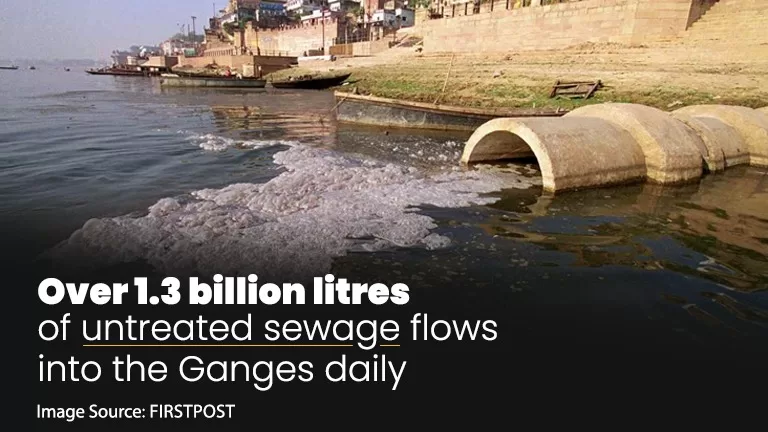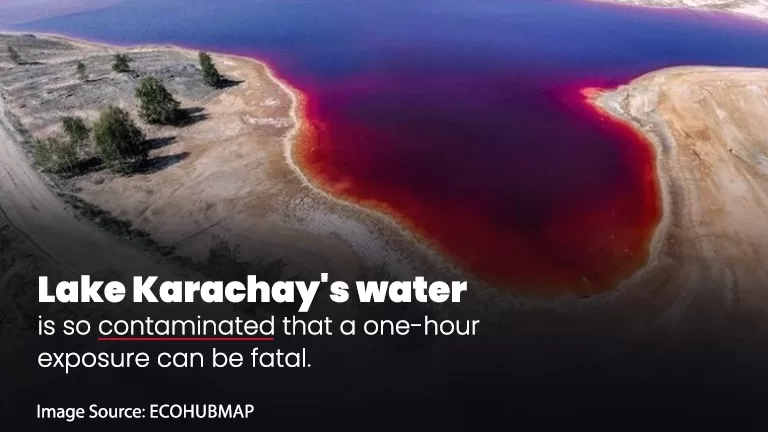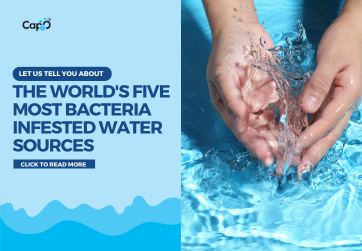Introduction
Water is an essential resource for all living beings on earth. However, not all water sources are safe for consumption. In fact, many water sources around the world are infested with bacteria that can cause serious health problems. Escherichia coli (E.coli), Salmonella, Coliform, Shigella, and Vibrio are prominently occurring forms of bacteria in natural water sources. In this blog, we will take a closer look at the five most bacteria-infested water sources in the world.
1. Ganges River, India
The Ganges River in India is considered one of the most polluted rivers in have found that the water contains high levels of fecal coliform bacteria, which can cause serious health problems such as cholera, typhoid, and dysentery. It is the holy river for Hindus, and millions of people bathe in its bacteria infested waters every day.

Causes of water pollution in Ganges
Unfortunately, the river is contaminated with bacteria, viruses, and other harmful pollutants. Several studies show that the primary source of pollution in the Ganges River is untreated sewage. The river receives over 1.3 billion liters of untreated sewage every day from cities and towns along its banks. Additionally, industries located along the river also dump their waste into the river, adding to the bacteria infested pollution. For more details refer-International Journal of Environmental Health Research – “Assessment of bacteriological quality of river Ganga in Haridwar, India” –
2. Rio Grande River, United States
The Rio Grande River forms a natural border between the United States and Mexico. Unfortunately, the river is also one of the most polluted water sources in the United States. The river contains high levels of bacteria, including E. coli and fecal coliform bacteria.
Causes of water pollution Rio Grande River
The pollution is primarily caused by untreated sewage and agricultural runoff. While, the river is a major source of water for drinking, irrigation, and recreation,
but the high levels of bacteria in the water make it unsafe for human consumption. The bacteria infested water can cause serious health problems, including gastrointestinal illness, skin infections, and respiratory infections.
3. Nile River, Egypt
The Nile River is the longest river in the world and is considered the lifeblood of Egypt. However, the river is also heavily polluted with bacteria and other harmful pollutants.
Causes of water pollution in Nile
The primary source of pollution in the Nile River is untreated sewage. Millions of people living along the banks of the river dump their waste directly into the river, causing high levels of bacteria in the water.
The Nile River is used for drinking, irrigation, and recreational purposes. However, the high levels of bacteria in the water make it unsafe for human consumption. The bacteria infested water can cause serious health problems, including cholera, typhoid, and dysentery. Read this article by the Arab Weekly here to learn more on the pollutants in Nile.
4. Yangtze River, China
The Yangtze River is the longest river in Asia and is an important source of water for millions of people in China. Unfortunately, the river is also heavily polluted with bacterial microorganisms and other harmful pollutants.
Causes of pollution in Yangtze
The primary source of pollution in the Yangtze River is industrial waste and untreated sewage. The pollution in the Yangtze River has caused serious health problems for people living along its banks. The bacteria in the water can cause gastrointestinal illness, skin infections, and respiratory infections. Additionally, the bacteria infested pollution has also had a negative impact on the river’s ecosystem, causing the death of fish and other aquatic life. Read more on this, here
5. Lake Karachay, Russia
Lake Karachay is located in the southern Ural Mountains of Russia and is considered the most polluted water source in the world. The lake was used as a dumping ground for nuclear waste from the nearby Mayak nuclear facility. The nuclear waste has caused the water to become heavily contaminated with radioactive materials, in addition to the bacterial pollutants.

Causes of pollution in Lake Karachay
The high levels of bacteria in the water make it unsafe for human consumption. The radiation levels are so high that exposure to the water can cause immediate death. Read how spending just about an hour in the vicinity of the lake is fatal for our life.
In conclusion, access to clean water is a basic human right, but unfortunately, millions of people around the world still don’t have access to it. The bacteria-infested water sources discussed in this blog highlight the serious consequences of pollution and the urgent need for action to address the problem. Governments, industries, and individuals all have a role to play in protecting our water sources and ensuring that everyone has access to safe and clean water. Organizations like Cap2O are working towards this goal, by bringing out unique hand-held gadgets like their UV-SMART bottles to purify water on the go. However, we all have a part to play in making a wider positive change. Let’s work together to protect our planet’s most valuable resource: water. Let’s not make our water sources dumping grounds of plastic, industrial, and human waste and work together to build a sustainable world for our future generations.


Very informative loved the way of explanation thanks for sharing such content.
Helpful and Informative blog
This blog was informative and helpful!!
I appreciate the depth and research you put into this blog! 👏🏻
great information. it is a serious issue.
Great information. keep posting such content
`
i haven’t knew that before
good information.